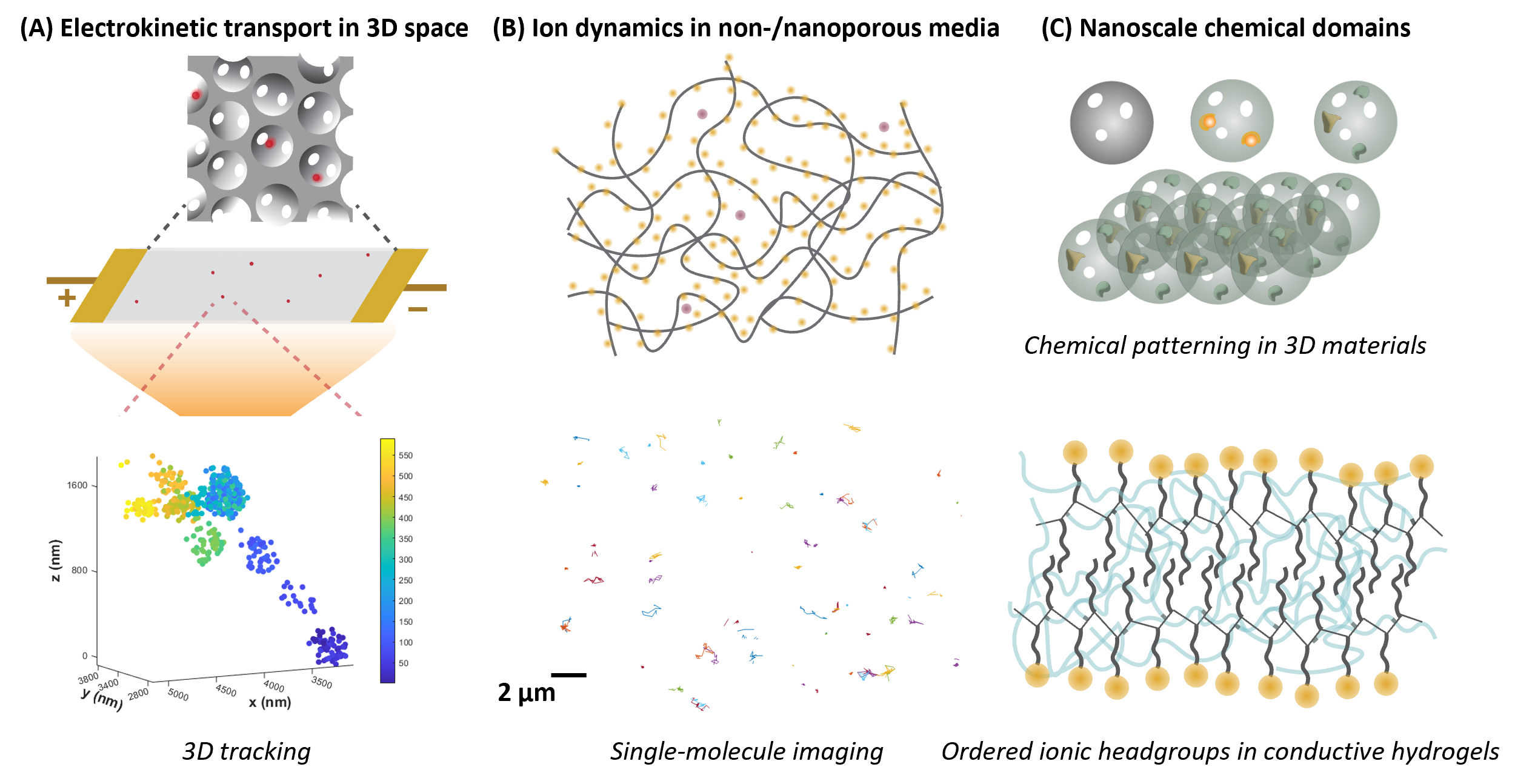2024 AIChE Annual Meeting
(4ik) Colloid and Ion Transport in Nanostructured Environments
Author
Overview
Mass transport in interface-rich and porous structures is prevalent in biological, energy storage and environmental systems. The heterogeneous nature of interfaces leads to unique physical phenomena (e.g., surface tension and electric double layers) and chemical properties (e.g., distinct reactivity and on-surface molecule assembly), which result in complex and diverse transport behaviors. Inspired by the potentials of the interfacial characteristics, I aim to develop interdisciplinary research in interfacial transport phenomena by employing experimental and computational approaches. I will further leverage this fundamental study to design and functionalize materials with enhanced performance in separation, transport, and reactivity, particularly for pharmaceutical and energy sustainability applications.
The research in CITrNE will focus on three board areas with specific aims:
- Electrokinetic transport in interface-rich materials. Utilizing 3D high-resolution single-particle tracking techniques and computational simulations, I focus on (i) the relationship between the macroscopic and pore-scale dynamics of confined charged colloid and external force field coupled with 3D geometrical confinement; and (ii) the systematic design principles for the geometries of high-performance interface-rich materials applied to the electric field, such as stationary phase of electrochromatography and separator membranes in batteries.
- Ion dynamics in ion-exchange polymers. The transport of molecules and ions in ion-exchange polymer membranes is complicated by the material's heterogeneity, making permeability and conduction difficult to predict with simplified models. I propose a systematic experimental examination of ion dynamics and its correlation to separation and conductance in polymer matrices with varying internal geometries and chemical compositions. This study will involve large dataset analysis of ion trajectories and will be supported by computational simulations to enhance predictive polymer design.
- Nanoscale interface patterning. Chemical patterning in a 3D environment is essential for controlling biological processes. Inspired by the high functionality of natural 3D systems with precisely controlled patterned domains, I aim to: (i) develop patterning methods for 3D void spaces to construct nanoscale reaction chambers resembling cells for biosynthesis; and (ii) create ordered domains of functional acid headgroups in hydrogels to enhance the performance of conductive hydrogel membranes for applications in flexible electronics and neural interfaces.
Teaching Interests
I am interested in teaching undergraduate courses such as general chemistry and transport phenomena, as well as graduate courses on colloids and interfaces. Additionally, I am eager to develop elective courses for both undergraduate and graduate students on the topic of "Materials Characterization Methods."
